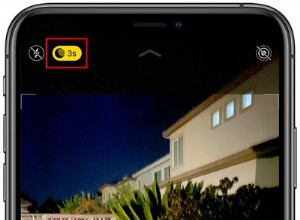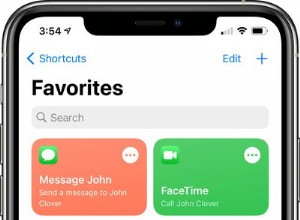عندما ولد أيدن تورنر ، نظرت والدته إلى وجه مولودها الجديد وتنهدت بارتياح.
فهم الحنك المشقوق الخفي
الحنك المشقوق تحت المخاطية ، أو الحنك المشقوق المخفي ، هو عيب خلقي يمكن أن يسبب العديد من التحديات للرضع والأطفال الصغار.
تقول إيمي مورغان ، أخصائية أمراض النطق واللغة في مستشفى شرينرز للأطفال ، إن عضلات الحنك الرخو لها وظيفتان مهمتان. إنهم يغلقون أنفنا من فمنا أثناء تناولنا الطعام ، مما يساعد الطفل على خلق شفط من الثدي أو من الزجاجة. عندما لا تكون هذه العضلات في المكان المناسب ، سيكافح الأطفال للتغذية بشكل فعال. وتلك العضلات أيضًا تسد أنفنا من فمنا أثناء التحدث.
عندما نصنع أصواتًا ثابتة تتطلب زيادة الضغط على سبيل المثال ، "p" أو "b" أو "s" ، فإننا في الواقع نستخدم الحنك الرخو لسد أنفنا حتى لا يتسرب الهواء خارج. إذا كانت هناك مشكلة في تلك العضلات منذ الولادة ، فسيكون من الصعب جدًا على الطفل تعلم كيفية صنع أصوات ثابتة.
عندما يتم تشخيص الحنك المشقوق تحت المخاطية ، غالبًا عندما يبلغ الطفل 4 أو 5 أو 6 سنوات ، في كثير من الأحيان ، هناك شعور بالارتياح والتحقق من صحة الوالدين ، مع العلم أن هناك إجابة لما يحدث مع طفلهم ويقول مورغان إن هناك علاجًا متاحًا.
تظهر بعض نتائج العلاج فورًا بعد الجراحة ، مثل تقليل تسرب الهواء عبر الأنف. يمكن أن يستغرق تصحيح عادات أخرى مثل تصحيح العادات السيئة في الكلام التي قد يكون الطفل قد طورها للتعويض عن الصعوبات اللغوية سنوات حتى يتم تصحيحها بالكامل.
ما هي العلامات التي يجب أن يبحث عنها الآباء لتحديد ما إذا كان طفلهم يعاني من الحنك المشقوق؟ يقترح مورغان ما يلي:
- صعوبات في الشفط أثناء الرضاعة الطبيعية أو الرضاعة (ملاحظة:يمكن أن تساعد الزجاجة المعدلة.)
- يخرج الحليب من أنف الطفل أثناء الرضاعة
- لهاة مشقوقة ، حيث ينقسم النسيج المتدلي في مؤخرة سقف الفم إلى قسمين
- صعوبة في تطوير الكلام (يميل الأطفال إلى البدء في المناغاة بين أربعة وستة أشهر ، كما يقول مورغان. وغالبًا ما يكون الصوت الأول الذي يبدأ به الأطفال هو m ، متبوعًا بـ "ب" و "د" و "ز". وعندما لا ينجب الأطفال هذه الأصوات ، يمكن أن تكون علامة على عدم وجود ضغط كافٍ.)
- صوت مفرط في الأنف يحدث عندما يحاول الطفل نطق الحرف d أو t
لمزيد من المعلومات ، قم بزيارة American Cleft Palate Association ، www.acpa-cpf.org.
وُلد والد أيدن وشقيقته الكبرى ، تايلور ، بحنك مشقوق ، وهو تشوه يحدث عندما لا ينغلق سقف الفم تمامًا بينما ينمو الرضيع في الرحم. قد يعاني الأطفال حديثو الولادة المصابون بالحنك المشقوق من شق اللهاة ، وهو امتداد سمين للحلق الرخو يتدلى فوق الحلق. عندما لا تنغلق الشفة العليا للرضيع في الرحم ويبدو أنها منقسمة ، فإن هذا يُعرف باسم الشفة الأرنبية.
أخبر مستشار علم الوراثة والدة آيدن ، تيفاني بانكس من شيكاغو ، أن أيدن لديه فرصة بنسبة 50 في المائة لتطوير الحنك المشقوق. أعدت تيفاني نفسها للأسوأ ، مع العلم أن هناك فرصة قوية لابنها أن يخضع لعملية جراحية لتصحيح التشوه ، تمامًا كما فعلت أخته ووالده.
ولكن عندما ولد أيدن ، "نظرنا إلى فمه ، وكان لديه حنك ممتلئ ولهاة طويلة ، وبدا كل شيء كما لو كان هناك" ، كما تقول تيفاني. "كنا مرتاحين جدا. كنا نظن أن كل شيء على ما يرام ".
على الرغم من ذلك ، كانت هناك أسباب للقلق على الفور.
عانى أيدن من صعوبة في الأكل منذ البداية. استغرق مجرد امتصاص الزجاجة مجهودًا كبيرًا. في عمر خمسة أشهر ، لم يكن يصدر أصواتًا. "ابنتي تايلور ، حتى مع وجود حنك مشقوق ، كانت تهدل وتذهب. يتذكر تيفاني.
في تسعة أشهر ، إذا أصدر أيدن صوتًا - وهو أمر نادر - كان غير مفهوم.
في عمر 12 شهرًا ، "كان سيبدو كما لو كان يحاول قول شيء ما ، لكن الكلمات لن تظهر.
"هذا عندما علمت:هناك شيء خاطئ بشكل خطير. وبدأت في البحث ".
كان أيدن يعاني من الحنك المشقوق تحت المخاطي ، ويسمى أيضًا الحنك المشقوق المخفي ، حيث يغطي الغشاء المخاطي لسقف الفم الشق ، مما يجعل من الصعب رؤيته. يولد واحد من كل 1000 طفل مصابًا بشفة مشقوقة والحنك المشقوق ، وفقًا لمؤسسة الحنك المشقوق ، ويولد طفل واحد من بين كل 2000 طفل مصابًا بالحنك المشقوق وحده. لكن من الصعب تحديد النسبة المئوية للأطفال الذين يولدون بحنك مشقوق مخفي ، كما تقول أخصائية أمراض النطق واللغة آمي مورغان من مستشفى شرينرز للأطفال في شيكاغو.
يقول مورغان ، الذي يعمل مع أطفال يعانون من هذه الحالة.
“Often, children with submucous cleft palate aren’t diagnosed until they are 4, 5 or 6 years old.”
Submucous cleft palate can easily be treated with surgery and speech therapy—often years of therapy. But getting to the point of diagnosis and treatment often is a frustrating journey for parents—and Aiden’s journey, even with a family history of cleft palate to present to physicians for consideration, was no exception.
Fighting to be heard
When Aiden was a year old, Tiffany’s research led her to believe he had hidden cleft palate. “It sounded a lot like what Aiden was going through,” she says. But it took nearly three more years for Tiffany to find a pediatric team that took her concerns seriously and to support her in getting the help Aiden needed.
At 18 months, an early intervention specialist suggested submucous cleft palate might be the cause of Aiden’s difficulties in speaking. “He would just try and try to talk to me, and I couldn’t understand him,” Tiffany says. But an ear, nose and throat specialist who examined Aiden six months later with a nasal scope said he “couldn’t make a judgment call,” Tiffany says. He recommended Aiden continue speech therapy.
And so it went, for nearly two more years. As Aiden continued speech therapy through the state’s early intervention program—with limited results—Tiffany secured an appointment with a pediatric development center. At that time, his sounds were limited to those made with the letters m, n, h and w and to vowel sounds. It was almost impossible to understand him because everything he said sounded nearly the same, Tiffany remembers.
Specialists there determined Aiden spoke with just 20 percent intelligibility, “And that was just to me,” Tiffany says. But they ruled out issues related to his mouth. Their advice:Continue speech therapy.
Meanwhile, Aiden became quiet and shy. When he chose to speak, it was usually to his mother. “He would get so frustrated when he would say something and people would ask him, ‘What?’ He would shut down,” Tiffany says.
He learned the basics of sign language and, when he aged out of early intervention and moved into a special education program, he received a tablet that could help him communicate as well. But his communication was limited to home, speech therapy and special education, making his world very small.
And because so much of Tiffany’s time with Aiden was spent teaching him how to communicate, there wasn’t time left for her to teach him other preschool basics. “We spent all of our time—all of our time—working on speech, so we didn’t work on ABCs; we didn’t work on colors; we didn’t work on anything you would ordinarily work on with a child because every day was devoted to trying to get him to make sounds,” Tiffany says. “He was very, very far behind.”
All the while, Tiffany was reaching out to specialists in search of an answer. When an orthodontist who evaluated Aiden for an underbite told Tiffany as he conducted the exam, “This boy has a submucous cleft palate,” Tiffany was livid:“After all of those years of trying to get him diagnosed and knowing something was wrong, it made me so angry to think, ‘That’s what I tried to tell people last year.” He referred Aiden to the cleft palate team of an academic medical center—but a speech pathologist on the team didn’t believe Aiden’s condition warranted surgery. She recommended continued speech therapy instead, with a focus on articulation.
“I told her, ‘He’s over 3 years old, and he can’t speak. There’s no progress being made.’ But she told me, ‘I just don’t think surgery is an option,’” Tiffany says.
Then came the night Tiffany’s mother saw an advertisement on television for Shriners Hospital for Children—specifically, for the hospital’s cleft palate services. “She called me and said, ‘We have to get him into Shriners. We have to see them.’”
They drove 45 minutes to Shriners in Tiffany’s mother’s car for their first appointment.
What happened next changed everything.
The road to a cure
Nearly four years and more than 536 appointments after Aiden’s birth, his family finally had the answers they were looking for and the support that would enable him to speak for the first time.
On the day of their visit with the cleft palate team at Shriners, Aiden was diagnosed with submucous cleft palate and placed on a priority list for surgery to correct the condition.
Three weeks later—the month before Aiden’s fourth birthday—Aiden underwent surgery.
Although this was the support Tiffany and her family had waited for, “It was still absolutely frightening knowing that something’s wrong, and then having someone say something’s wrong, he needs surgery, and he needs surgery right away, and preparing him to go into surgery,” Tiffany says. “It was a big shock. I was worried, too, that because Aiden was so much older, he would remember the surgery.”
Meanwhile, Aiden didn’t comprehend what was about to take place. “He just knew that he liked their playroom,” Tiffany says.
The recovery was rough:soft foods only for the first month, with three months of therapy, three times a week, afterward. But the Shriners team was very good with Aiden, bribing him with toys in the hospital to encourage him to eat a cup of pudding and working together afterward to ensure a coordinated approach to his continued treatment.
Even when Tiffany’s mother’s car broke down and she and Aiden had to ride the bus to Shriners, two hours each way, she felt grateful—to her mother and to the team at Shriners. “I really thought he was never going to speak,” she says. “It was a horror story.”
Today, Aiden is 10 and in the fourth grade. He loves soccer, football, baseball and running, with plans to try out for the track and field team next year. His reading skills are behind those of his peers, but his math skills are on par with the average fourth-grader. With the help of a paraprofessional, Aiden attends class in a mainstream setting.
For years, Aiden had trouble making friends due to difficulties speaking with kids his age and the shyness he struggled to overcome. “Things seem to be getting better as time goes on,” Tiffany says. “His speech is fantastic. Only sometimes will he have a lisp or difficulty saying a word, and he knows what those challenge words are. He’ll stop and think for a moment before he tries to say them.”
While the memory of those early years remains—“If he says something and you ask him, ‘What?’ he almost immediately shuts down,” Tiffany says. “He doesn’t like to talk to adults for the same reason”—Tiffany and Aiden both know his life would be very different if she hadn’t followed her maternal instincts and fought for the help he needed.
“Without that surgery, I don’t think that he would be speaking today,” she says, “and he would be stuck in the same place he was when he was 3.
“Trust your instincts,” she advises parents facing a similar situation. “I knew when Aiden was a year old that something was wrong, and it took two more years to get a diagnosis. And don’t stop fighting for your child.”






